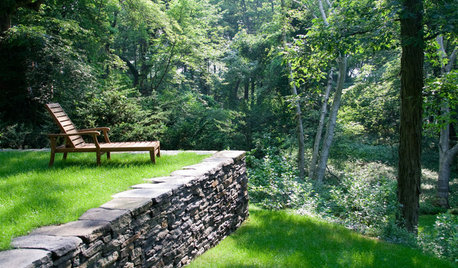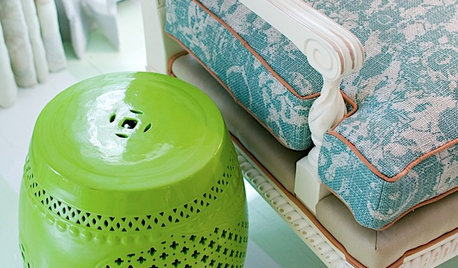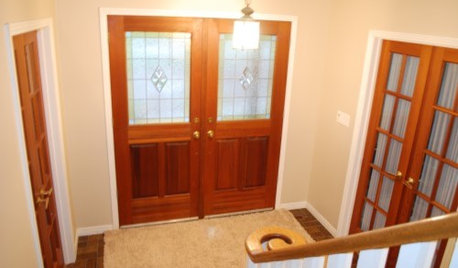Help me plan my garden!
Brian
8 years ago
Featured Answer
Sort by:Oldest
Comments (21)
rgreen48
8 years agolast modified: 8 years agoRelated Discussions
Bored at work - help me plan my container garden
Comments (5)Okay - so I took a long lunch today and went to our awesome little nursery here. I broke out the pocketbook, but I am going to take the left overs home to my house so here is what I got: I ended up going with a white/lavendar/purple/green theme . . . begonia - white tiarella cordifolia elephant ear - illustris diamond frost - euphoria petunia - superbells white sweet potato vine - sweet caroline snapdragon - angelface angelonia - serena lavender cabana - trailing blue bacopa snowstorm - giant snowflake saparagus fern lysimachia - sundew springs coleus - velvet lime new guinea impatiens - lavender creeping jenny heliotrope - baby blue imp. coneflower - coconut lime zinnia - star white polka dot plant - white splash a small bay tree parsley oregano - sweet and spicy golden oregano greek basil whoo hoo!...See MoreSun loving, as in Sun Only?
Comments (4)I know you are asking about hosta that are more sun tolerant than less tolerant. I grow hosta in a bog in full sun and they seldom show any effect from the sun. Hosta are not shade tolerant they are heat intolerant and of course water effects heat but at certain heat and humidity water is not enough. Search bog hosta....See Morehelp me plan out my garden...chart inside
Comments (1)Just some ideas: You have 3 plants that need full sun. The tomatoes will grow the largest and you don't want them shading the other plants. Marigold and basil are good companions to tomatoes. The peppers and eggplant would probably do fairly well in containers. In reality, each tomato could use at least 4 squares. Unless you cage and/or prune....See MoreHelp me plan my garden
Comments (3)Wow that's a lot to fit into that small space. The notch entry faces west, right? I'd put the tomatoes along the back wall trellis so they don't shade everything else, the squash on the north side trellis, all the peppers in the south end, and find somewhere else out of the garden for the melons. It all depends on how many plants of each you want. You could space 4 (maybe 5) tomato plants on that back wall, maybe 4 pepper plants in the south block, and 2 squash plants in the north end block. Hope that helps. Dave...See Morenancyjane_gardener
8 years agodigdirt2
8 years agoBrian
8 years agolast modified: 8 years agoBrian
8 years agodigdirt2
8 years agoBrian
8 years agoM. Wilson
8 years agodefrost49
8 years agodigdirt2
8 years agonancyjane_gardener
8 years agoHumsi
8 years agothepodpiper
8 years agoFastInk
8 years agoBrian
8 years agoFastInk
8 years agolucillle
8 years agolast modified: 8 years agobeth_b_kodiak
8 years agoGB
8 years agoGB
8 years ago
Related Stories

LANDSCAPE DESIGNWhat the Heck Is a Ha-Ha, and How Can It Help Your Garden?
Take cues from a historical garden feature to create security and borders without compromising a view
Full Story
LANDSCAPE DESIGNNative Plants Help You Find Your Garden Style
Imagine the garden of your dreams designed with plants indigenous to your region
Full Story
EARTH DAYHow to Help Your Town’s Beneficial Birds and Bugs
Make a habitat using local materials to provide a home to the creatures that help our gardens
Full Story
WINTER GARDENINGHow to Help Your Trees Weather a Storm
Seeing trees safely through winter storms means choosing the right species, siting them carefully and paying attention during the tempests
Full Story
LANDSCAPE DESIGNHow to Help Your Home Fit Into the Landscape
Use color, texture and shape to create a smooth transition from home to garden
Full Story
BATHROOM WORKBOOKStandard Fixture Dimensions and Measurements for a Primary Bath
Create a luxe bathroom that functions well with these key measurements and layout tips
Full Story
DECORATING GUIDESThe Most Helpful Furniture Piece You May Ever Own
Use it as a table, a seat, a display space, a footrest ... and indoors or out. Meet the ever-versatile Chinese garden stool
Full Story
STANDARD MEASUREMENTSThe Right Dimensions for Your Porch
Depth, width, proportion and detailing all contribute to the comfort and functionality of this transitional space
Full Story








ekgrows